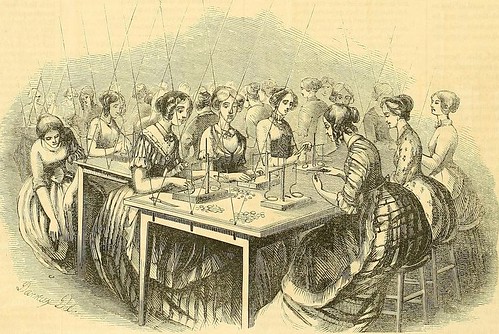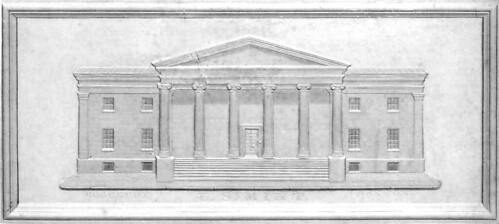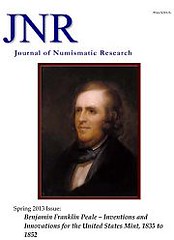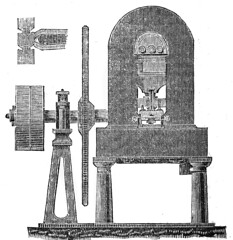
PREV ARTICLE
NEXT ARTICLE
FULL ISSUE
PREV FULL ISSUE
REVIEW: JOURNAL OF NUMISMATIC RESEARCH, SPRING 2013Roger Burdette produces a wonderful periodical, the Journal of Numismatic Research. The Spring 2013 issue focuses on the work of Benjamin Franklin Peale. Here's the description from the Wizard Coin Supply web site:
The Spring 2013 JNR is 135 pages of detailed articles and rarely seen illustrations covering the work of Benjamin Franklin Peale. Most collectors recognize Peale as inventor of the steam powered press introduced at the Mint in 1836. What few are aware of is the extent to which Peale’s work changed the Mint, its coining capacity and the basic nature of U.S. coins. With help from Joseph Saxton and Adam Eckfeldt, and a wealth of detailed knowledge brought back from his European mission, Peale’s inventions converted the Mint from a backward haphazard operation into a technology-leading mint. By the early 1850s, the Philadelphia Mint could produce more good coins per day than any mint in the world, and these were made at labor and equipment costs far below the best European mints. Peale’s “magic” was a combination of insightful use of technology, and simplification. For him, the best solution to a problem was not technology alone, it was a amalgamation of human capabilities with basic mechanical principles that produced the greatest return for the least amount of money, time and energy. Titled Benjamin Franklin Peale – Inventions and Innovations for the United States Mint, 1835 to 1852, this magnificent research edition describes and illustrates every improvement and invention made by Peale for the U.S. Mint. Peale’s inventions turned the Mint from a backwater mint barely hobbling along, into the best, most modern and most economical national mint in the world. From his well-known coinage press, to blank cutters, furnaces, electrotyping, die manufacturer, balances, hiring female employees, rolling mills, upsetting machines, coin counters - the list goes on and on, Franklin Peale literally reinvented the US Mint's equipment and operation. This is a hefty issue, printed on heavy glossy paper as with previous JNR issues. While not a mainstream numismatic publication, the journal has much to offer casual readers and collectors in addition to the numismatic researcher crowd. This issue has a lot of great reading material. PAGE 9: BENJAMIN FRANKLIN PEALE – INVENTIONS AND IMPROVEMENTS FOR THE UNITED STATES MINT, 1835 TO 1852 by Roger W. Burdette PAGE 13: IMPROVEMENTS IN THE METHOD OF MAKING WORKING DIES AND REDUCTIONS – 1835 PAGE 23: IMPROVEMENTS IN ASSAYING AND PARTING SILVER, AND RECOVERING PRECIOUS METALS FROM WASTE WATER – 1835 PAGE 27: INVENTION OF A TOGGLE-JOINT COINAGE PRESS – 1835 PAGE 38: IMPROVEMENTS IN ROLLING, DRAWING AND ANNEALING – 1835-1839 PAGE 49: INVENTION OF THE ECCENTRIC DRIVE BLANK CUT-TING PRESS – 1836 PAGE 57: INVENTION OF THE UPSETTING MACHINE – 1836 PAGE 63: IMPROVEMENTS OF THE PILING BOX AND COIN COUNTING BOARD – 1837 AND 1839 PAGE 71: DESIGN FOR A STEAM ENGINE – 1839 PAGE 91: IMPROVEMENT OF BALANCES – 1835-1847 PAGE 103: IMPROVEMENTS IN ELECTROTYPING FROM MODELS OF METAL, WAX AND PLASTER – 1840
When the second United States Mint opened in Philadelphia in 1833, it was a new build-ing filled with antiquated and obsolete equipment, and operated with equally outdated production practices. A steam engine had been introduced in 1817 but it did little more than power the antique rolling mill – nearly everything else was performed by horse or human power. (p9) Franklin Peale began his service to the Mint that same year, and at the request of Director Samuel Moore, Peale sailed for Europe in May 1833 with the goal of learning everything he could about the state of the art of coining. On his return two years later he was eager to apply his knowledge and intellect not only to bring the U.S. Mint in line with the rest of the world, but to surpass it. His recommendations and inventions took the U.S. from a third-rate operation to one of the best in the world, a leader in coin manufacturing technology.
His changes were not necessarily met with complete enthusiasm by old hands at the mint. Jacob Eckfeldt in particular had mixed feelings. “If Mr. Peale had full swing he would turn everything upside down. Why, he even talks of throwing away our costly coining presses that have done and are doing such good service, and dispensing with manpower. Yet he won’t hear of applying steam power to our old screw presses, which has been done successfully at the Royal Mint, London. He wants something better and no doubt would have it, [as] if we were starting anew.” Peale was leapfrogging the competition, bypassing incremental improvements for wholesale changes that would improve quality and quantity by orders of magnitude. Many of Peale's key improvements are described in detail in this issue. Here's just one example:
The basic mechanics of the press are from the same family as Peale’s blank cutting and upsetting machines. All used an eccentric to redirect rotational energy to linear force while maintaining simplicity of operation. On a broader scope, all three were components and principles used in locomotives and stationary steam engines, and these connected back to Peale’s early years working with Matthias Baldwin. While many collectors' eyes may glaze over at descriptions of the mechanics, true numismatists will recognize the importance of Peale's innovations to the production of high quality coinage at scale. While many will lament the loss of the interesting collectible variations introduced by the earlier semi-handmade era of coin production, it was an era doomed regardless by the growth of the nation and its economy. Only high-speed methods like Peale's would be able to keep up with demand, and luckily the new systems simultaneously increased quality - the best of both worlds enabled by the new industrial age and the wit of clever mechanics like Peale. Peale's innovations were not only mechanical - he made important operational and social changes as well. It was Peale who turned a significant portion of the coin-making process over to female employees, who proved to have greater speed and dexterity than men, and until equal pay was enforced in 1887, they worked for half the salary.

Planchet adjusters at the Philadelphia Mint, 1852 Bibliophiles will note that Peale also had a hand in creating the famous image of the Second U.S. Mint seen in Eckfeldt-DoBois' 1842 book, A Manual of Gold and Silver Coins of All Nations Struck Within the Last Century. At the front of Eckfeldt’s book was a ruled engraving of the U.S. Mint in Philadelphia. The illustration was produced from a photograph Saxton had taken in 1841 with his daguerreotype camera pointed northward from the south side of Chestnut Street, the street toward which the Mint building faced. Christian Gobrecht, the mint’s engraver, cut an incuse relief from the daguerreotype in soft metal, and Peale made an electrotype from this incuse model. Saxton used the ruling machine on the electrotype to make an engraved printing plate.124 The names “Gobrecht” and “Saxton” can be seen below the building at left and right, respectively. (p106)

I could go on to cite a number of interesting tidbits to be found within the pages of this issue of JNR. I highly recommend it to numismatists everywhere who are curious to learn more about the nitty-gritty of how the great coins we collect today were made, and how Benjamin Franklin Peale was a key innovator at a key time in numismatic history.
To order, see:
Journal of Numismatic Research -- Issue 2 -- Spring 2013 (Benjamin Franklin Peale)
(www.wizardcoinsupply.com/journal-of-numismatic-research-spring-2013-benjamin-franklin-peale-inventions-and-innovations-for-the-united-states-mint-1835-1852.html)
The Numismatic Bibliomania Society is a non-profit organization promoting numismatic literature. See our web site at coinbooks.org. To submit items for publication in The E-Sylum, write to the Editor at this address: whomren@gmail.com To subscribe go to: https://my.binhost.com/lists/listinfo/esylum All Rights Reserved. NBS Home Page Contact the NBS webmaster 
|

